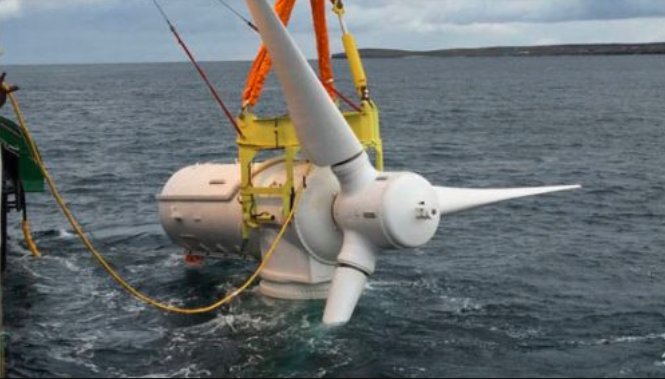A single underwater turbine off the Scottish coast is proving that tidal energy can go the distance — and maybe transform the future of clean power if investors take the bait.
Six Years Spinning Under the Sea
In the icy waters of the Pentland Firth, a narrow channel between the mainland and Stroma Island, four tidal turbines have quietly powered up to 7,000 homes a year. But what’s really making waves is that one of those turbines just crossed six and a half years underwater — spinning away without needing costly, disruptive maintenance.
It might not sound thrilling until you remember the ocean isn’t exactly gentle. Salt water, pounding tides, and corrosion eat hardware for breakfast. So, keeping a grid-scale turbine anchored 40 metres deep for that long is a record-breaker — and a major selling point for the whole tidal energy sector.

Tidal Power’s Big Potential
Tidal energy is still a toddler next to solar and wind. But the potential is enormous. The US National Renewable Energy Laboratory calls marine energy — think tides, currents, waves and even sea temperature shifts — the world’s largest untapped renewable energy resource.
Scotland, with its wild coastline and strong tidal streams, is perfectly placed. The MeyGen project, where this record-breaking turbine spins, has four turbines producing 1.5 megawatts each.
One-liner: Not huge yet, but imagine scaling that up.
Why This Durability Record Matters
Keeping turbines submerged for longer slashes costs. If engineers had to haul them up every couple of years for repairs, the price tag for tidal farms would be eye-watering.
No wonder SKF, the Swedish company behind the bearings and seals that held up for 6½ years, was buzzing when they announced the milestone. They’ve spent a decade testing, tweaking and rethinking parts that can survive the punishing sea.
One engineer summed it up: “If your kit fails underwater, you’re not sending Dave down with a wrench — you’re sending a ship and a crane. It’s expensive.”
Investors Finally Taking Notice
The trade body Ocean Energy Europe says this milestone could be the push the industry needs. Investors want proof these turbines can handle brutal ocean conditions — and now they have it.
Key facts:
-
MeyGen is still the biggest tidal array in the world.
-
The UK has an estimated 50% of Europe’s tidal energy resource.
-
Tidal power could provide reliable, predictable clean energy to complement wind and solar.
What’s Next for Scotland’s Coastal Power?
More turbines, naturally — if the money flows. Companies are already looking at bigger arrays, aiming to plug tidal power into national grids at scale.
A quick snapshot:
| Project | Turbines | Power Output | Homes Powered |
|---|---|---|---|
| MeyGen | 4 | 1.5 MW each | 7,000 |
| Future MeyGen | Planned expansion | +28 MW | Tens of thousands |
Critics still worry about costs, marine life impacts and whether tidal can really compete with cheaper renewables. But with turbines now lasting longer underwater, the economics start to shift.
For the communities around the Pentland Firth — some of the fastest-moving tidal waters in the world — that spin beneath the waves might be the start of a clean energy powerhouse.


















